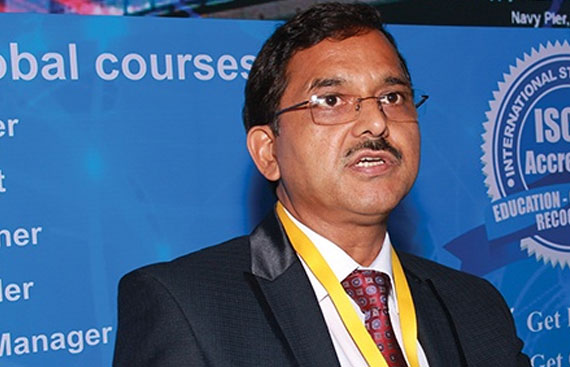Harish on The Ups and Downs in the Aerospace and Avionics Industry

Q. The Internet of Things (IOT) represents huge, worldwide growth in devices that are building an increasingly connected and intelligent future. The aviation and aerospace industry is too affected in ways more than we can comprehend. State your observations.
Harish: The fastest of human mobility mode is the slowest in every aspect (other than flying) to design and test; manage supply chain, build and inspect; organize maintenance and keep it reliably flying; stretched time from the point of prior land travel to start flying. This further gets too stretched and complicated with arrays of super critical capabilities, peak capacities, multiple party engagements and high customer expectations which must collaborate for optimizing and maximizing for an alluding high margin game in a high risk and security environment. On top of these, industry is highly regulated and system driven due to Zero tolerance for defects.
The above provides plethora of opportunities for innovations and improvements in every gamut of aviation and aerospace industry spread over many decades in future. Also, aggressive stance by Japan, China and India to “Make Local” calls for a major operational shift to meet increasing demand of services and products from these countries.
IOT is being progressively used now in supply chain, manufacturing, aviation services and Maintenance Repair and Overhauling (MRO).
Whole industry is expected to move to a service model wherein it runs on OPEX rather Capex. This will further compel quick adaption of IOT and other technologies and further innovations.
Q. For manufacturers of aerospace components to make an impact, they need to look beyond their components. How do you think the manufacturers need to change their approach to further implement sensor technologies?
Harish: Long term thinking is critical for aerospace to spell out integrated future expansions considering size, shape, subassemblies and assemblies, technologies and processes required to name a few. Each order filling order pipeline has to go through the grail of capability and capacity investment analysis for hitting requisite profit margins. Considering failures are damaging and highly injurious to businesses in aerospace and aviation, the model has to be perfected and sanitized for any human errors. Instead of reasoning out and getting inclined towards low cost labour, it will be prudent to think of right technology for seamless and perfected processes with very high reliability.
The whole process need to run on design approach where the value-added processes run seamlessly without “incase” human interventions.
Manufacturers need to take a holistic view (leapfrogging) combined model of human and sensor technologies in a given process. Similarly, the solution providers need to enlighten their customers on the value preposition. The argument need to be “why” not “why not”.
Q. After the economic downturn the outlook for the Avionics software market continues to be difficult. However, the market is expected to follow the overall aircraft manufacturing cycle. How far are we looking before avionics takes over?
Harish: These are program agnostics hence right time for the industry to develop deep insight and value preposition for the future. Civil and Defense market need to be viewed separately. Also, working closely with system suppliers and understanding what future programs and challenges they are working on will be of help. Exploring drones, unmanned vehicles and new aerospace vehicles designs will further expand business opportunities. Develop new technologies, explore new programs and collaborate with OEM’s and other tier players, who are working on new products and programs, will help to build future order pipeline.
Q. Trends in Aerospace create a situation where excelling in one single aspect no longer suffices, as the market expects both innovation and close cooperation but does not always allow the price to increase in tandem with this. Comment
Harish: Agree. The present supply chains abroad have been perfected for decades; operate in a close clustered approach; work in a low interest rate and inflation regime. Our advantage is mainly labour cost arbitrage which gets knocked off due to costlier imports and higher inbound and outbound logistics costs. Only way out is to work at scale and be smarter than our competitors.
Q. The advent of new generation intelligent, composite aircraft and its capital investment and skill upgrade requirements are key challenges facing commercial aviation’s maintenance repair and overall sector as it sits on the cusp of a decade of growth. What has the future in store for the Aviation & Aerospace domain 10 years down the line?
Harish: Complete solutions and service model will emerge requiring disparate capabilities and skills. In India, we need to prepare a nation-wide skill requirements and how the mix of skills will mature in future. We need first to create trainers in the industry and then engage these trainers through Industry- academia environment.
As India’s infrastructure develops in road, rail and water, aerospace needs to aggressively compete with these modes of transports. The emerging disruptive mobility platform requiring no ownership is setting a new benchmark of price per kilometre. Aviation industry will need a tremendous agility and innovation to match up to this new benchmark.
